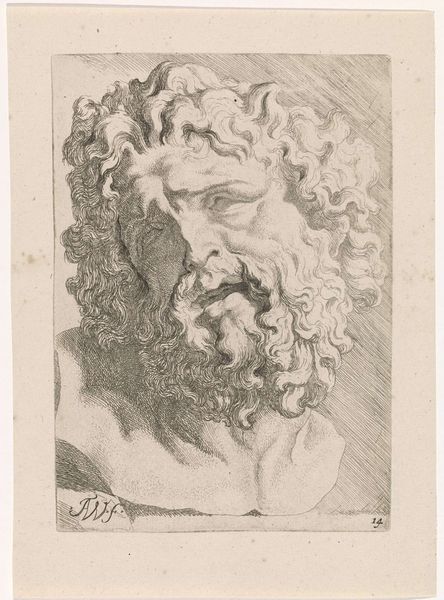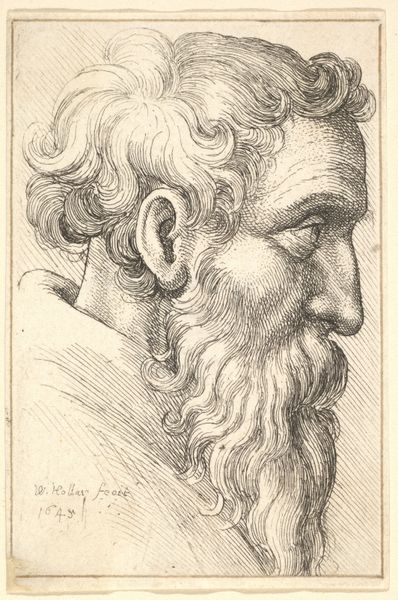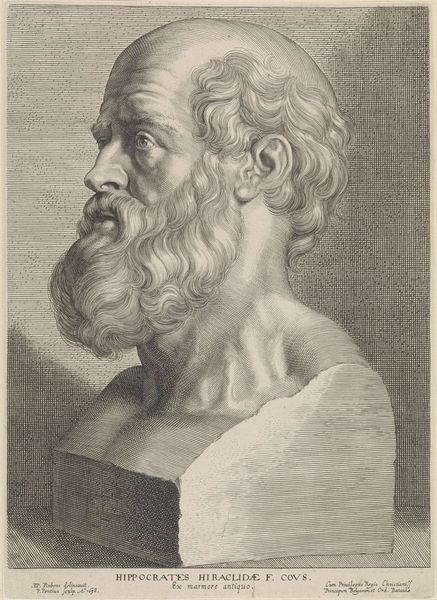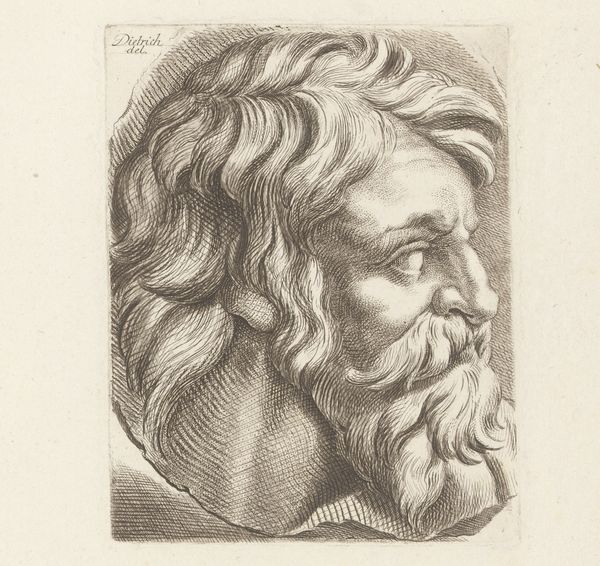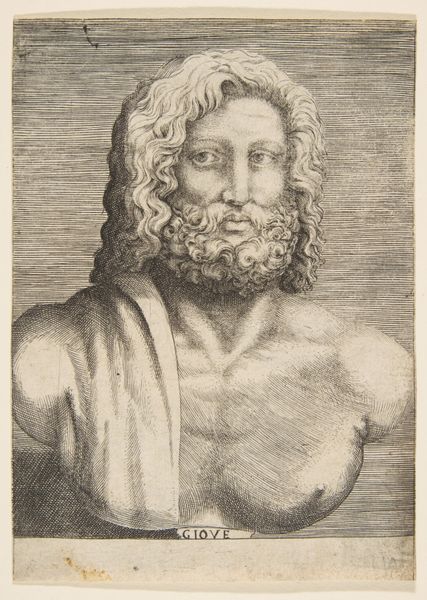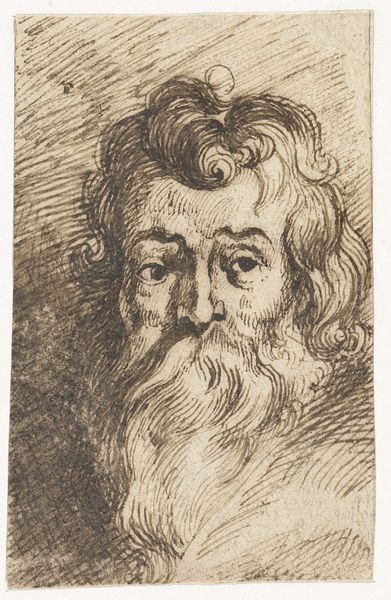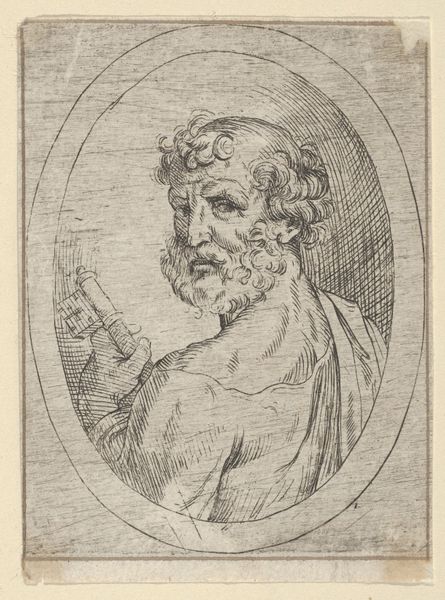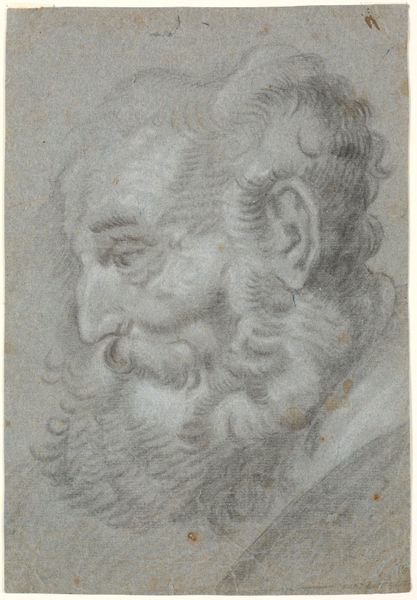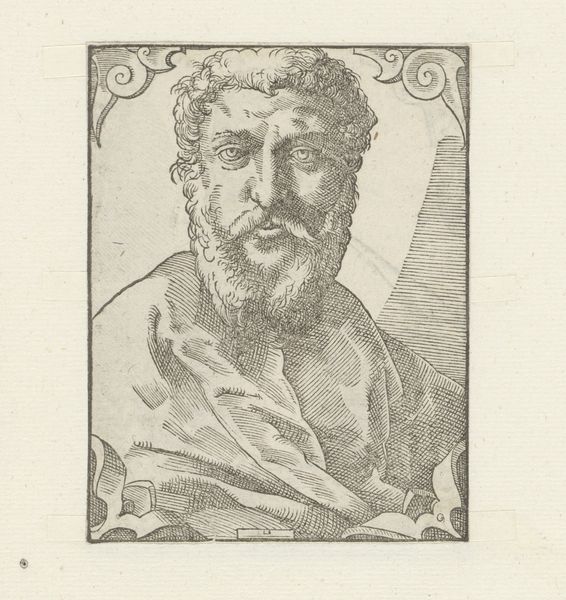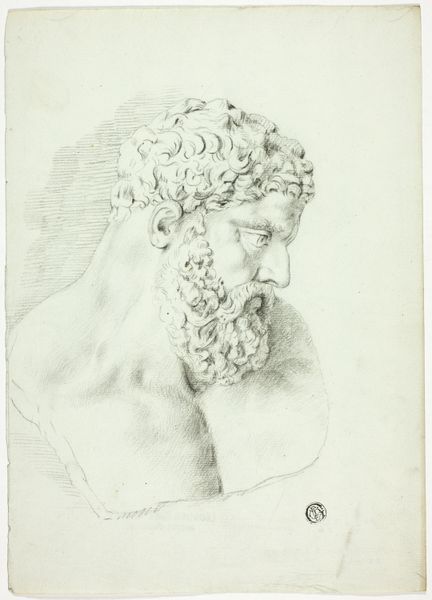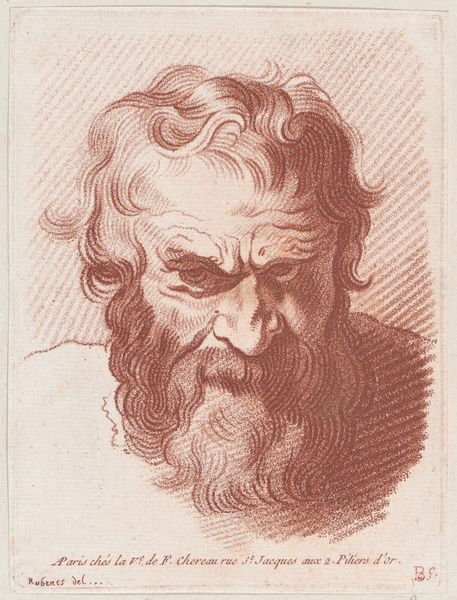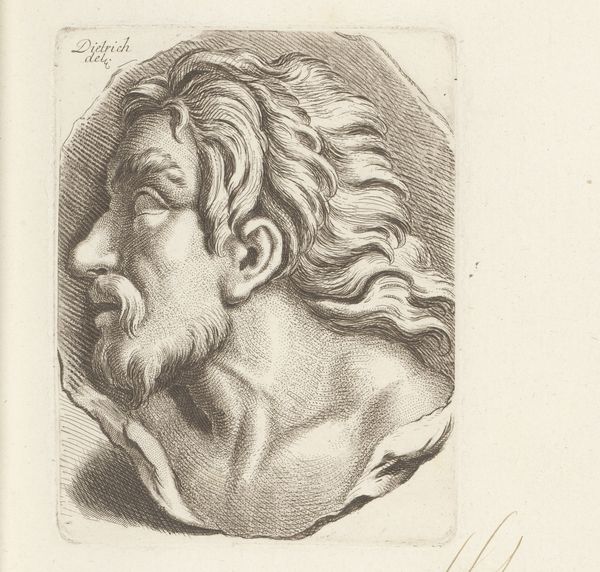
engraving
#
portrait
#
baroque
#
old engraving style
#
figuration
#
form
#
portrait drawing
#
history-painting
#
engraving
Dimensions: height 162 mm, width 114 mm
Copyright: Rijks Museum: Open Domain
This is Augustinus Terwesten's rendering of the "Head of Laocoön on a Pedestal," an etching where the artist masterfully uses line and form to convey intense emotion. The composition immediately draws you to the Laocoön's face, its features deeply etched to convey a sense of suffering and struggle. The lines are not just descriptive but expressive, creating a texture that communicates both physical pain and emotional turmoil. Note the contrast between the dense, chaotic lines of the hair and beard, which frame the more open, subtly shaded planes of the face. This contrast highlights the internal conflict and agony central to the Laocoön narrative. Terwesten's choice to isolate the head on a pedestal also invites a semiotic interpretation. The pedestal signifies the Laocoön's status as an object of study and contemplation, distancing him from the actual moment of suffering. This invokes philosophical questions about the nature of representation and our relationship to depictions of pain. The very act of etching—a process of controlled destruction—adds another layer to the artwork's meaning, destabilizing any fixed interpretation. This etching is not merely a reproduction of the sculpture but a complex engagement with themes of suffering, representation, and the very nature of art itself.
Comments
No comments
Be the first to comment and join the conversation on the ultimate creative platform.
